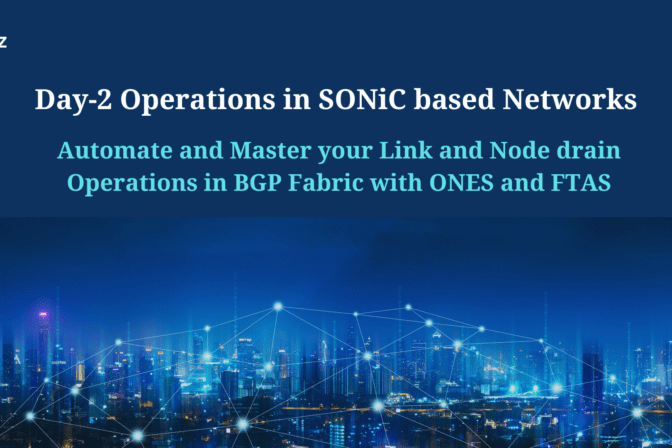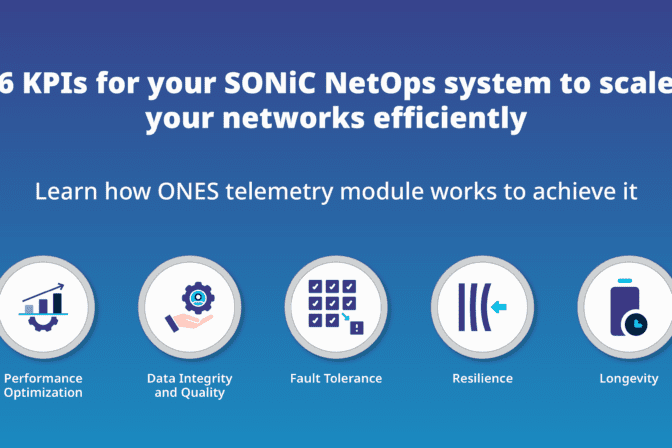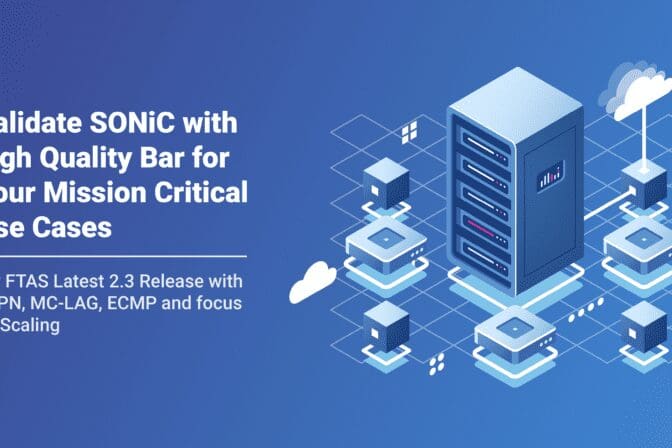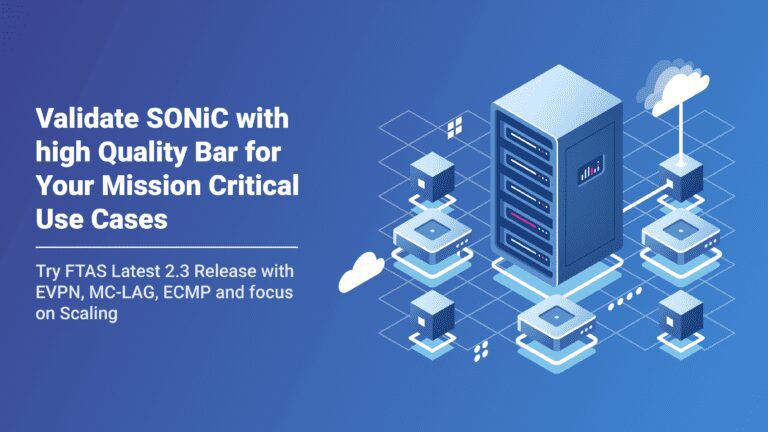SONiC (Software for Open Networking in the Cloud) Network Operating System (NOS) has seen a huge surge in its popularity and adoption in the last few years. Originally developed by Microsoft and subsequently open-sourced, it offers a versatile, modular, and hardware-agnostic platform that decouples the switching hardware from the software running on it. This allows the much-needed flexibility in networking hardware choices for the enterprise. The openness of SONiC and the customer demands have prompted a majority of hardware vendors to support SONiC on their switches. While SONiC has become a leading choice for data center networking, and major hardware vendors are supporting it on their platforms, this disaggregation is leading to a fair bit of chaos as organizations deploy hardware sourced from multiple vendors with different flavors of SONiC running on them.

In this blog, our goal is to bring clarity to what it means to deploy, operate, and support SONiC and its various flavors on different platforms, understand the SONiC support ecosystem, and navigate the ecosystem to utilize the options best suited to your organization.
NetOps & SONiC Support Landscape

Operating and supporting SONiC on multiple hardware platforms involves a combination of strategies due to its open-source nature and the disaggregated model it promotes. Here’s what organizations should know before making decisions for NetOps tools and Support options available for SONiC.
- Proprietary Single Vendor NetOps: relies on a network operations model where all solutions come exclusively from one vendor. While this ensures tight integration and often simplifies network management, it leads to vendor lock-in. Many vendors have integrated SONiC with their existing NetOps tools, but organizations may face constraints with adaptability, potential high costs for changes, and dependency on the vendor’s roadmap.
- Proprietary Single Vendor Support: refers to a support model in which all assistance for the hardware and software comes exclusively from the original vendor. Much like integrating existing NetOps tools with SONiC, many vendors support SONiC on their platforms. While it may ensure a deep knowledge of the hardware and software SONiC is running on, it can limit flexibility, and organizations may be bound by the vendor’s support hours, and policies.
- Disaggregated Multi-vendor NetOps: represents a shift from traditional, monolithic network operations to a more flexible model where network components, both hardware and software, can be sourced from various vendors. This approach relies on unified multi-vendor software solutions for optimized network operations and cost savings. Vendors who previously created unified tools have also started integrating SONiC, but such tools lack the depth in their SONiC integrations. So far, only Aviz has taken the approach of developing a purpose-built solution for multi-vendor SONiC NetOps.
- Disaggregated Multi-vendor Support: refers to a support model in which the assistance comes from a third party vendor who has deep knowledge of the software and hardware components across all the vendors utilized in a network infrastructure. Availability support across multiple vendors introduces the complexities in coordination and communication, which is why it is critical that the third party vendor has back channels established into all the original vendors, with tight SLAs. Again, so far, Aviz is the only vendor that has established well-defined SLAs with the vast majority of Platform and ASIC vendors to create the back channels.
When executed right, a Disaggregated Multi-vendor NetOps and Support structure for SONiC can yield huge cost-savings, minimize vendor lock-in risks, and allow organizations to adapt more flexibly to the technological advancements in the networking domain.
Unpacking & Navigating Multi-vendor SONiC Deployments
SONiC presents a transformative approach to networking, offering a modular, adaptable, cost-effective, and forward-looking solution to meet the evolving needs of next generation network infrastructures. When it comes to evaluating options for SONiC NetOps and Support, we recommend:
- Understanding Hardware Compatibility for SONiC: ensure that all hardware platforms you’re selecting are SONiC compatible, and make sure you are evaluating the platforms in context of the feature sets you plan to utilize.
- Narrowing Down the Builds for SONiC: some vendors offer custom SONiC builds optimized for their hardware.
- Identifying a Normalized NetOps Stack for SONiC: for efficient network operations, you will need to identify tools that not only understand SONiC’s underlying architecture, but also the various nuances that get introduced by various flavors of SONiC. Only tools that are purpose-built for SONiC can handle such nuances, since they are designed to normalize the data before delivering functionalities.
- Identifying a Neutral SONiC Support Partner: vendors who provide SONiC compatible hardware also offer support, but that is typically limited to the support for SONiC on their own hardware and their custom SONiC builds. Third-party providers on the other hand generally focus on supporting the community distro. The key is in identifying vendors who not only have good experience with SONiC on multiple platforms, but also deep relationships with individual Platform and ASIC vendors that you select for your infrastructure.
Aviz ONES & Multi-vendor SONiC Support
Aviz Networks is a leading provider of open-source SONiC solutions, dedicated to revolutionizing the networking landscape with their unique approach. We firmly believe in SONiC’s potential as the future of networking and focus on delivering purpose-built tools and solutions specifically designed for its ecosystem.
With over 100 man-years of experience across various hardware platforms, Aviz Networks has developed their flagship platform, Open Networking Enterprise Suite (ONES). ONES is designed to work seamlessly with any SONiC on any platform, regardless of the underlying ASIC.
As a testament to our commitment to open networking, we have established strong relationships with the majority of platform, ASIC, and OS vendors. Our highly skilled SONiC support team, along with ONES, are used by businesses worldwide to effectively deploy, operate, and support SONiC across diverse hardware environments.
Experience the Power of ONES and the ONE Center!
Aviz Networks invites you to experience firsthand the transformative power of ONES and our Multi-vendor SONiC Support. Visit the state-of-the-art Open Networking Experience Center (ONE Center), either online or in-person, and discover the possibilities of SONiC across a wide range of hardware. Take advantage of a free, hands-on experience and explore how SONiC can optimize your network operations. Test our well-known vendors in hardware, platforms, ASIC, and OS environments, including Cisco SONiC, NVIDIA SONiC, Celestica SONiC, Marvell SONiC, Wistron SONiC, Edgecore Community SONiC, Arista SONiC, Supermicro SONiC, Enterprise SONiC, and DELL SONiC before your SONiC deployments.
Schedule your demo today and unleash the potential of your network!
Benefits of Aviz Solutions:
- Open-source based: Leverages the flexibility and scalability of SONiC
- Platform-agnostic: Works with any SONiC on any platform, with any underlying ASIC
- Comprehensive solutions: Offers a complete suite of tools for deployment, operation, and support
- Expert support: Provides access to a highly qualified SONiC support team
- Free trial: Experience the capabilities of ONES and the ONE Center firsthand
Contact Aviz Networks today to learn more about their innovative solutions and unlock the potential of SONiC for your business.















